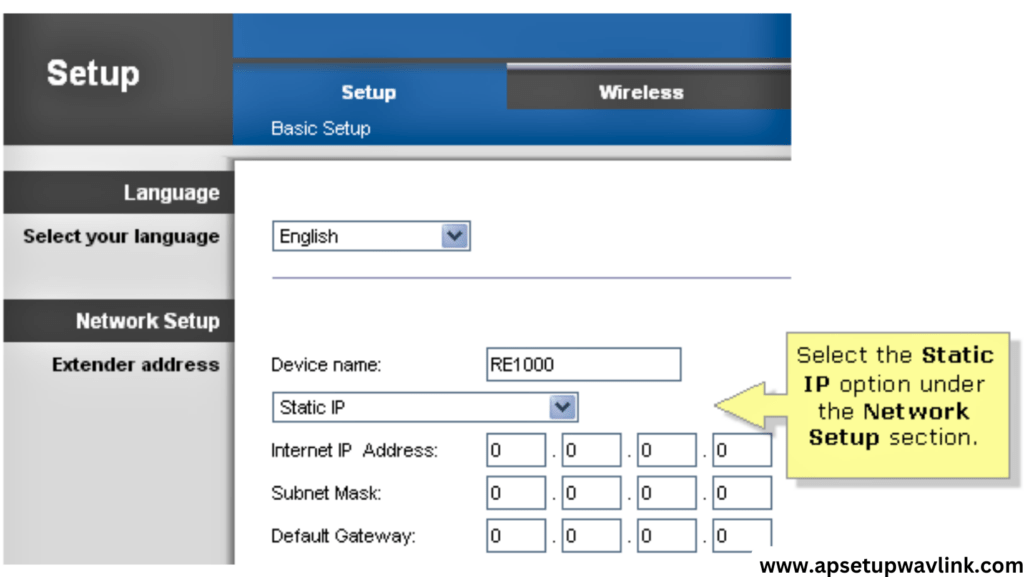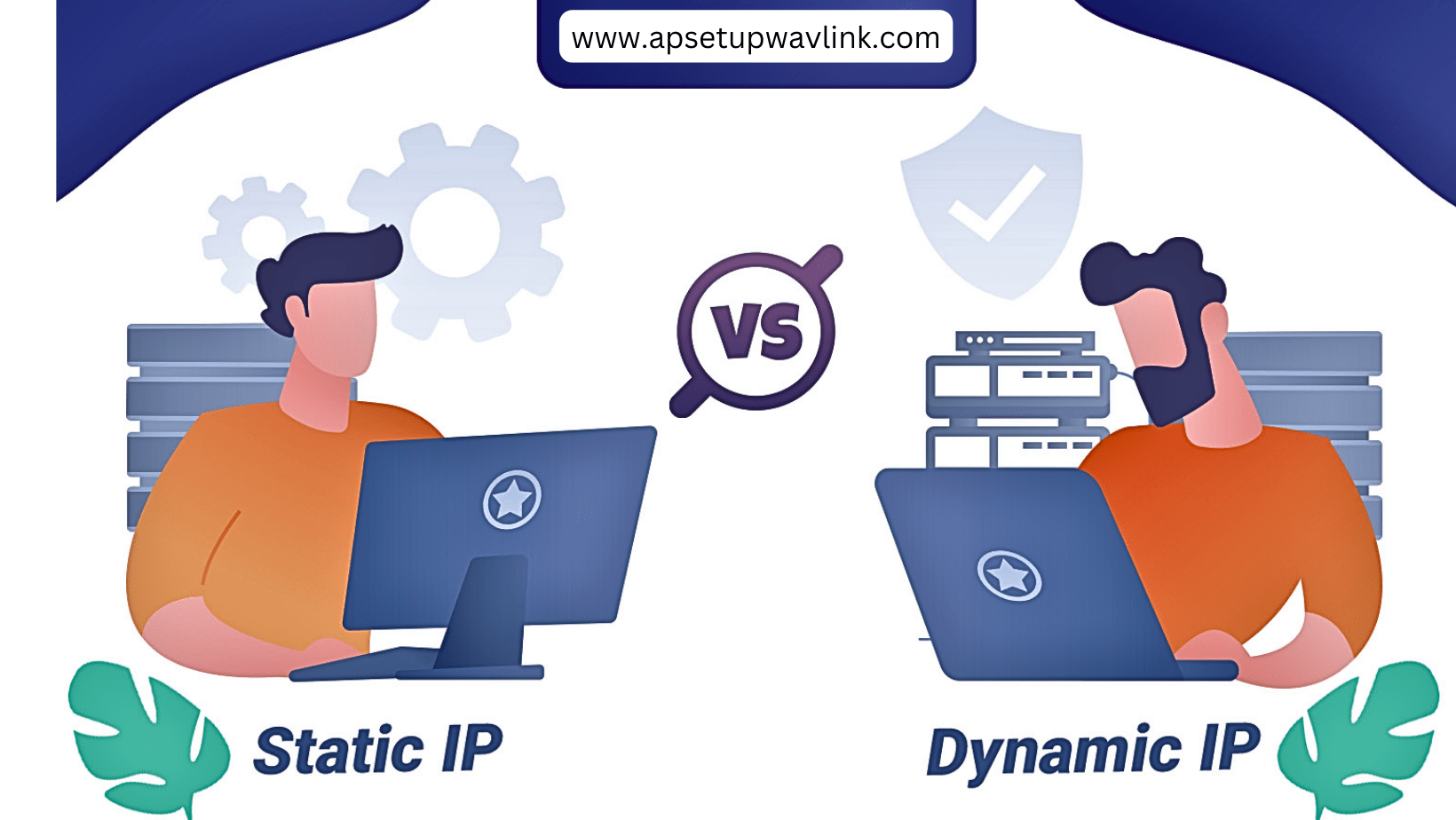Static IP address provides advantages such as facilitating remote access solutions and enhancing network security. Configuring static IP addresses is a straightforward and simple process. This page offers step-by-step instructions for configuring static IP addresses, making the setup process easy to understand and implement.
What Is An IP Address?
An IP address is a distinctive numerical identifier assigned to each device connected to the internet. It follows a specific format: a series of numbers separated by dots. The IP address includes geo-location information and other identifiers that enable devices to send and receive information from one another.
There are two types of IP addresses:
- Static IP address.
- Dynamic IP address
What Is The Use Of Static IP Addresses?
A static IP remains constant, never undergoing changes. This stability makes it ideal for computer configurations like servers, devices sharing a printer, or those connected to a server remotely. Static IP addresses offer enhanced Geo-location accuracy and bolster network security, providing users with additional capabilities and protection over their network connection.
Businesses leverage static addresses for strategic purposes such as hosting and creating servers. The versatility of static IP addresses allows them to be easily deployed in any Geo location, making them a flexible option for various internal applications.

The Benefits of Static IP Address Over Other Types
1- Easily Link With Your Computer:
In contemporary times, locating files and accessing data saved on your computer is crucial, even when you are not physically near it. A static IP enables users to connect to their computer from any location, particularly through the use of Virtual Private Networks (VPNs). When a device is linked, it signifies that the stored data is accessible remotely.
2- Extend Internet Speed:
The use of a static IP facilitates seamless file transfers, document uploads, and content downloads when compared to other IP addresses, such as dynamic ones.
3- Good Research:
Static IP addresses, in comparison to other IP addresses, assist in providing accurate geo-location data. This is beneficial when mining geographical data from visitors to your website.
4- Extend Reliability Of VOIP Calls:
A Static IP also enhances the reliability of VOIP calls and applications such as Zoom, Skype, Face Time, Google Meet, etc.
5- Increase Protection:
Dynamic or other IP addresses are considered more secure due to their frequent changes. On the other hand, static Addresses offer additional protection layers, ensuring that any security issues are promptly addressed.
How To Configure a Static IP Address?
On MAC Device:
- After launching the Apple menu
- Choose System Preferences.
- Click on “Network” and choose the network you are currently using.
- Click on the “Advanced” option.
- Select the “TCP/IP” tab.
- Choose “Configure IPv4” and set it to “Manually.”
- In the “IPv4 Address” field, enter the desired static IP address.
- Finally, click the “Apply” button to save the changes.
On Window 10:
- Access your computer settings initially.
- Navigate to the “Network and Internet” options.
- Choose your internet network connection.
- Choose “Manage known network” > “Properties” > “IP settings.
- Click on “Edit” and then choose “Manual.”
- Enable IPv4.
- Enter the desired static IP address.
- Type ‘IPconfig’ into the window and input the portal information.
- Save all the changed settings in the end.
On Android Mobile Phones
- Open the settings on your mobile phone and select ‘Internet connection’ > ‘WiFi.’
- Choose the gear icon located next to your current network.
- Navigate to IP settings and switch to ‘Static.’
- Enter the desired static IP address.
- Save all the settings.
On IOS Gadgets:
- Open the Settings on your device and select the WiFi option.
- Click on the network you are connected to.
- Under IPv4, choose ‘Configure IP’ and then select ‘Manually.’
- Enter the desired static IP address.
- Save the changes.
Configure IP Address Through Router:
Note: Different bands of the router use different systems, so these instructions would not relate the same to your router. To assign a static IP address to a device on your router, follow these steps:
- Access the router’s configuration page.
- Navigate to sections on the configuration page named LAN settings, static IP address, or DHCP reservation.
- In the router network, input the MAC address of the device.
- Fill in the static IP address that you want to assign to that device.
- Save all the changes.
Difference Between Static And Dynamic IP Address
In terminology, the key distinction between static and dynamic IP addresses lies in their characteristics. A static IP address remains constant, maintaining the same value over time, while a dynamic IP address undergoes changes. Both static and dynamic IP addresses adhere to a similar pattern, with the static IP remaining unchanged and the dynamic IP address subject to alterations. Essentially, the character of a static address does not change, whereas a dynamic address has the potential to change over time.
Security Protection Of Static Address
A static IP address may not offer enhanced security as its unchanging nature makes it more susceptible to potential threats. The static address, with its consistent character and data, could be relatively easier for hackers to guess or target. Additionally, static IP are more straightforward to track, potentially posing a security concern.
Take Away
After reviewing this page, we anticipate that you will acquire the knowledge to obtain and configure a static IP address. Additionally, you will gain an understanding of the distinctions between static and dynamic IP addresses. However, if you encounter any difficulties, please feel free to reach out to our team of experts for assistance.
Read More
- wavlink n300 setup
- Wavlink Powerline Setup
- Wavlink WiFi 6 Router Setup
- WL WN519n2 N300 Extender Setup
- WL-WN691AEF AC650 Extender Setup
- Wl WN566a2 AC750 Extender Setup
- Wl WN566a2 AC750 Extender Setup
- WL WN579G3 AC1200 Extender Setup
- WL WN583A6 AC2100 Extender Setup
- Wavlink wifi4 extender setup
- WL WN575A4 AC1200 Extender Setup
- WL WN575A4 AC1200 Extender Setup
- WL WN583AX1 AX1800 Extender Setup
